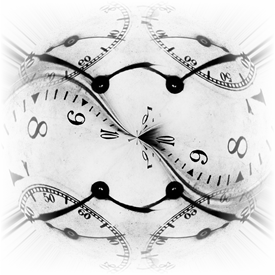Telling Time in the Future
Telling Time in the Future
We'll need a system for telling time in the future that works on more than just one planet, or we’ll always be late for our birthday own parties.

The beauty of this system is that, as far as we know, cesium (or your atom of choice) has the same frequency regardless of where you are in the galaxy (black holes notwithstanding). The problem is, the Earth is big enough to need 24 hours for 6:00 a.m. to get to all parts of the planet. So if I want to talk to my friends in eastern Australia, it’s usually already the next day for them. Now compound that problem with the unimaginably huge distances between solar systems, faster-than-light travel, and planet spin and rotation speeds, and synchronized timekeeping becomes a critical requirement.
Telling Time in the Central Galactic Concordance

In my series' history, expanding civilization soon discovered they needed a standard, because while the planets selected for terraforming and settlement come close to Earth, planetary orbit and rotation variances made “local time” worthless if you were hoping to set up a meeting, or agree on a deadline. The local calendar is used for festivals, business hours, etc., but significant dates, such as contract deadlines, or birth dates, are recorded in GDAT notation. A GDAT date of 3233.012 is the twelfth day of the year 3233. It roughly correlates to the year 3733 on Earth, owing to an interregnum and subjective calendar variances in the early days of galactic exploration and settlement.
Here’s an excerpt from Overload Flux, to show you how telling time in the future plays out:

.









